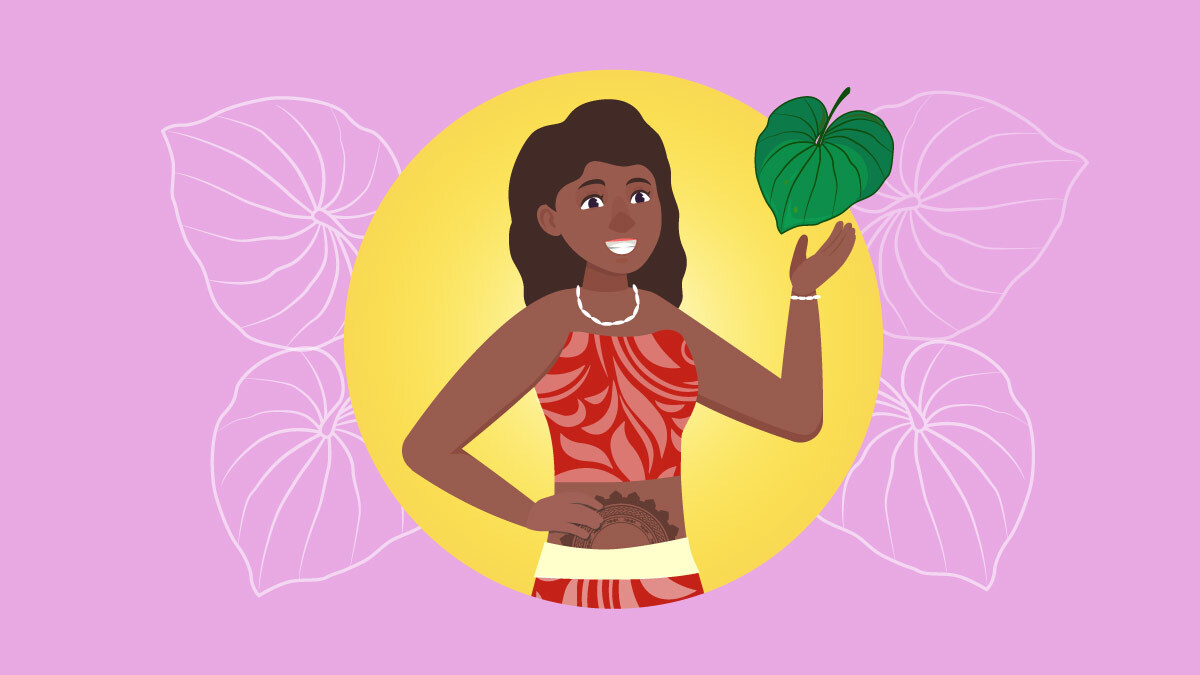If you’re new to kava, you’re in the right place.
This all-inclusive guide covers everything you need to know to get started with kava — including how to use it safely, what the side effects are, how to prepare kava tea, how much to take, and what types of products to use first.
This is a big topic, so let’s get straight into it with the basics.
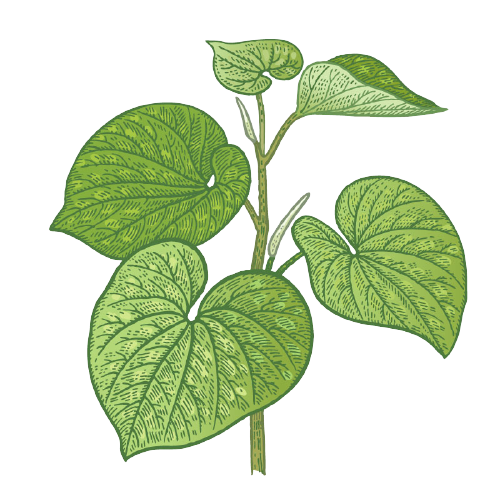
What is Kava?
Kava is the common name for Piper methysticum — a member of the Piperaceae (pepper) family. This makes it a close relative of black pepper (Piper nigrum).
On the South Pacific Islands where kava originates, kava is used for both ceremonial and medicinal purposes — primarily for its powerful relaxing effects and the mild euphoric high it produces.
In higher doses, kava produces effects often described as euphoric. It makes users feel a strong sense of calmness and contention — almost as if all the problems experienced in the day-to-day have washed away.
Traditionally, these effects were used to help people reach higher states of meditation of spiritual connection, for grieving after losing a loved one, to show respect to the land, or simply socialize in a relaxed environment with friends and family.
Nowadays, kava is primarily used to help manage stress, anxiety, mild depression, and insomnia. Some use it for meditative purposes or to experience the mild, yet enjoyable high the plant produces.
What is Kava Used For?
- To alleviate the side-effects of stress
- To prepare the body for a stressful event like public speaking
- To help manage anxiety symptoms
- To uplift mood
- As an alternative to alcohol to wind down at the end of the day or relax
- To support a healthy sleep
- To aid in meditation
- For religious or spiritual ceremonies
- To relax the muscles after an injury
- To enhance creative work
- As a social beverage to share with friends or family
How Long Does Kava Last?
Kava takes about 30 minutes to kick in, and peaks around 1 hour later (1.5 hours after drinking). The effects remain at its peak for about 1–2 hours before slowly tapering off. The whole duration of kava is 4 and 6 hours.
Most people drink kava over the course of a few hours. Once the effects are felt, a new shell is consumed every hour or so to maintain the effects. This makes kava last much longer.
There are also other herbs or supplements you can use to make kava last longer. These are called kava potentiators.
Where Does Kava Come From?
The origin of kava is hotly debated, but most experts agree it came from one of the islands of Vanuatu. Now the plant is grown on islands across the Pacific ocean — including the Solomon Islands, Fiji, New Guinea, Cook Islands, Tahiti, Karkar, Rotuma, Samoa, and New Caledonia.
Other places, like Micronesia, had a long history of cultivating kava — but the plant has since been eradicated by European missionaries who banned the plant to help with their mission. The use of kava was entwined in the local religion — so early missionaries thought if they were to ban the plant it would help them destabilize the local religion in place of their own. This was largely successful and many of these islands are now Christian.
Kava owes its wide distribution to the nomadic lifestyle of early Polynesian cultures. It was considered to be a valuable medicine, carried with travelers as they set off in search of new land.

Kava Origins
Kava is an unusual plant in that it forms flowers but doesn’t produce any seeds.
Instead of relying on seeds, kava spreads from the rootstock of the plant and has a strong reliance on humans to survive. Cutting pieces of rootstock and planting them in the soil will quickly develop into new kava plants.
Polynesian cultures across the Pacific have been cultivating and caring for kava for hundreds, perhaps even thousands of years. Without them, it’s likely the kava plant as we know it would have died out long ago.
Each new plant grown from a cutting has the same genetic structure as the plant it originated from — it’s essentially a clone of the mother plant.
The hypothesis is that Piper methysticum developed from a random mutation of a related species — Piper wichmannii. Someone, somewhere, discovered this mutated version had more desirable effects and began cultivating it at home. Through sharing cuttings of the roots with neighbors, this species eventually became the ubiquitous form people grow and use today. The only way for kava to continue to grow and spread is through direct human intervention.
There are a lot of traditional origin stories for kava. Most of these stories involve mystical or heavenly intervention to introduce the plant to humans.
Kavalactones & Kava Chemotypes
Despite the fact that kava doesn’t sexually reproduce, there are different cultivars of the plant.
Kava codes serve as a way to measure the chemical differences of different kava cultivars — of which there are dozens of different kinds.
Researchers are still struggling to understand how so many separate cultivars there are despite the fact that kava can’t swap genetic material between generations (in the forms of pollen and seeds).
Some taxonomists debate whether or not these cultivars are unique species or if they’re simply different variants of the same plant.
Either way, kava plants can vary in two key areas — morphology (how the plant grows) and chemical profile (what the chemical makeup of the plant is). We call plants with different chemical profiles chemotypes.
Knowing the kava chemotype is an important consideration for those of you looking to use kava at home. This is what’s going to determine the effects the kava plant produces.
The active ingredients of kava are a group of about 18 chemicals collectively known as kavalactones. Each one has a different physiological effect on the body. Some are sedative, others euphoric and uplifting.
Two researchers — Vincent Lebot and Joël Levesque — developed a system for tracking the chemotypes of kava based on the six most important kavalactones found in the plant. This coding system gives us the ability to make reliable assumptions about how a particular kava cultivar or supplement is going to feel.
In order to understand how this kava coding system works, we need to cover the main chemicals found in kava that collectively make up about 96% of the lipid extract of kava.
Each of these kavalactones gets a number that will be used to form the kava code:
- Demethoxyyangonin (DMY)
- Dihydrokavain (DHK)
- Yangonin (Y)
- Kavain (K)
- Dihydromethysticin (DHM)
- Methysticin (M)
These six kavalactones all form what can be thought of as the “kava cocktail”. Depending on how much of each compound is present will determine their effects — both good and bad.
Kava can be tested to assess these profiles, and a number is assigned to determine the order of compounds found in the plant starting from the most abundant.
For example, a chemotype highest in kavain (4), and lowest in yangonin (3) may have a code that looks like this — 421563.
Each number corresponds to one of the kavalactones listed above — demonstrating the dominance of each compound in the cocktail. The most abundant is 4 (kavain), followed by 2 (DHK), then 1 (DMY), and so on — you get the point.
An important note: The first three kavalactones in the code usually make up the majority of the mix (about 70%). So these are the most important to consider when looking for a kava supplement.
Differences in Effects of Kava Chemotypes
The chemical profile of kava is essential for determining the effects it’s likely to produce. For example, cultivars high in DHK (2) and DHM (5) are more likely to produce negative effects such as nausea and intense intoxication.
A common cultivar with the code 256431 is known for its uncomfortable intoxication that can last up to 48 hours. This cultivar is referred to as Tudei kava (two days) — because the effects last up to two days.
Other chemotypes, such as 426135 is famous for the opposite effects. It produces a very subtle and pleasant effect and is one of the most popular cultivars in the Western world. This cultivar is commonly referred to as Kelai Kava. It owes many of its beneficial effects to the high level of kavain (4) and methysticin (6).
Some cultivars are in the middle — producing mild effects with minimal side-effects. An example of this is the cultivar 246531 — which is the largest and most common group of kava cultivars — and the most likely kava type used in mid-level kava supplements.
Learn more about a particular cultivar of kava by checking out our kava brand reviews. We’ll provide the kava code for each product and a general breakdown of its effect profile.

Classifying the Effects of Kava
As we’ve mentioned in the sections above, the effects of kava can vary a lot. Over the years, drinkers have developed three terms to describe the general effects of a particular cultivar of kava.
Let’s cover the three main categories of effect profiles kava can produce:
1. Heavy Kava
This is used to describe kava that makes you feel very relaxed and heavy. You may feel like you’re sinking into your chair or couch or as though your body is slowly melting.
Kava with a heavy effect is preferred among people who use kava to reach deeper levels of relaxation and sleep — but should be avoided if using kava or social gatherings or to help with the creative process.
Heavy kavas tend to have longer-lasting effects than balanced or heady kava and have a greater impact on the body than the mind.
These kavas are generally higher in DHK (2) and methysticin (6). Sometimes these kavas also have a high level of DHM (5) but this is a less reliable marker than the other two.
2. Heady Kava
Heady kavas have more of an effect on the mind — producing uplifting and euphoric effects. The effects of heady kavas produce a feeling of calm contentment and wellbeing. Some are even mildly stimulating on the mind — promoting a feeling of focus and concentration.
Headier cultivars are less sedative, making them better as a social beverage at parties or events and are the best types of kava to support creative work.
In general, heady kavas are highest in yangonin (3) and kavain (4).
3. Balanced Kava
Balanced kavas are what you might expect — they’re a middle ground between being heady and heavy. They’re the most versatile kavas for this reason and the best option for beginners.
The kavalactones in balanced kavas can vary significantly, and there are no particular compounds that distinguish these kavas from others.
Noble vs. Tudei Varieties
There are so many different ways to categorize kava — from species all the way down to specific chemotypes of the plant.
The most common form of classification you’ll find online and on kava supplements is by its variety — noble or tudei kava.
Let’s cover each one in more detail.
1. Noble Kava
Noble varieties of kava have a much more enjoyable effect profile than Tudei varieties and are the best option as a daily health supplement. As such, they’re the most common form of kava you’re likely to find available online.
But beware — some kava sources will label Tudei kava as Noble kava, or make no distinction between the two. They often come at a lower price and are enticing to new users or those on a budget. It’s important the kava supplier you buy from is reputable to avoid ordering kava that’s only going to make you feel sick.
Always make sure the kava you purchase is a Noble variety, and avoid Tudei kava at all costs.
Some of the Most Popular Noble Kava Varieties Include:
- Borogu (Vanuatu)
- Borongoru (Vanuatu)
- Loa Waka (Fiji)
- Melomelo (Vanuatu)
- Pouni Ono (Tonga)
- Samoan Ava (Samoa)
- Vula Waka (Fiji)
2. Tudei (Pronounced Two-Day) Kava
These varieties are reserved only for use medicinally in the countries kava originates from. They often produce negative side-effects such as headaches, fatigue, and nausea — but can have excellent medicinal value if used by a herbalist well-versed in the use of kava as a medicine. They’re not appropriate for the casual kava user looking for the relaxing and euphoric effects of the plant.
The effects of Tudei kava can persist for a few days after taking kava and are not appropriate for the average consumer.
Common Tudei Varieties Include:
- Gawoboe (Vanuatu)
- Nisginekrai (Vanuatu)
- Raro (Vanuatu)
- Rongrongwul (Vanuatu)
- Sulusulu (Vanuatu
- Tarvarus (Vanuatu)
Exploring the Different Forms of Kava Supplements
For most of kava’s history, it was made by masticating (chewing) the raw rootstock to break down the protective layers of fiber, before mixing it with water to drink.
This had obvious sanitation issues and is no longer the way kava is prepared — especially in Western society. Instead, kava can be used with all the conventional ways of using herbal supplements — capsules, tinctures, and teas, as well as a powdered form that allows users to prepare the beverage in a similar manner to the traditional method — only without the need to chew the kava to a pulp first.
Let’s cover each form of kava in more detail.
A) Powdered Kava Root
Dried kava root powder is the most traditional form of using kava. It’s made by drying and powdering the kava rootstock — which is then mixed with water to dissolve as much of the active ingredients as possible. The final infusion resembles muddy water and has a strong bitter taste.
The dose of powdered kava will vary depending on how strong you want the effects to be, and how potent the kava you’re using is. For the average kava powder on the market, the recommended amount for a low-strength dose is 10 – 15 grams. For a high-strength dose, this can jump to about 20 or 30 grams.
Learn how to prepare kava using both traditional, and modern methods using the powdered root.
This is the way most people today use ceremonial kava and at home for meditation or social gatherings. Some people will use this method as their daily kava dose as well.
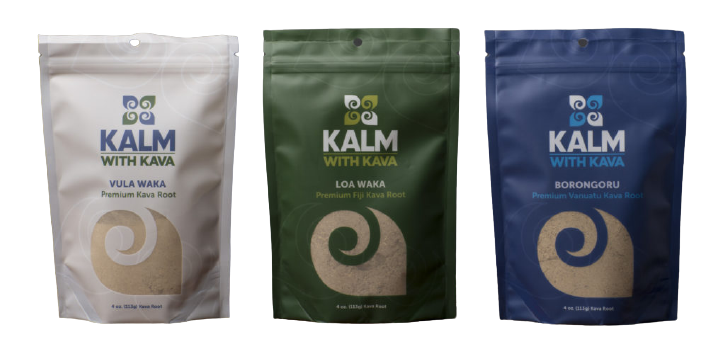
B) Kava Capsules
Kava capsules are the most common form of kava outside the South Pacific. Capsules are easy to use, store for long periods of time, and allow users to accurately measure the dose.
Each company that makes kava capsules will use its own standardization for the active ingredient — kavalactones. You can find capsules with anywhere from 5 mg kavalactones, to 50 mg kavalactones.
Some companies don’t offer any information on the kavalactone content of their capsules — we recommend avoiding these capsules whenever possible.
The downside to using capsules is that the manufacturers making them rarely list the cultivar. Knowing precisely the cultivar used is critical because each cultivar of kava has its own unique effect profile. This makes it hard to tailor your kava experience to your expectations.
Kava powders are much better if using kava recreationally, for ritualistic purposes such as meditation or creative workflows, or if you’re a regular kava user and want to dial-in the effects for your individual body.
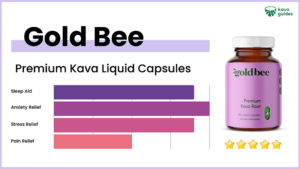
C) Instant Kava
Instant kava is a special form of kava powder designed for ease of use. It allows users to drink their kava without having to spend 10-15 minutes preparing it with traditional methods.
Instant kava tea is made by preparing large batches of traditional kava tea — which is then freeze-dried or dehydrated. The result is a very fine powder of the active compounds of kava.
Adding water rehydrates the tea — ready to drink within seconds.
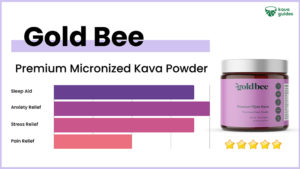
D) Kava Tinctures
Kava tinctures are another popular way of using the herb. They’re made by extracting the active kavalactones from the kava plant into a combination of water and alcohol. This is a common practice for herbs of all different types.
Tinctures have similar advantages to capsules — they’re easy to prepare and use, and store for long periods of time.
The dose of kava tinctures will depend on how strong it is. Some companies manufacture tinctures at a concentration of just 5% kavalactones, while others are much stronger at around 20% kavalactones.
Always follow the labels to determine the dose when using kava tinctures.
You can take tinctures directly into the mouth or add mix into a beverage to help mask the bitter flavor.
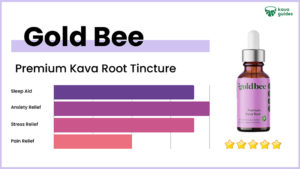
E) Kava Steep Tea (Tea Bags)
You can also find kava in the form of a simple tisane or steep tea. These products are usually sold as a blend of kava with other herbs in a teabag.
This form of kava is easy to use (just add hot water), and has a much better flavor due to the addition of other herbs like chamomile, mint, or black tea.
The only problem with this form of kava is that they rarely provide enough of a dose to experience the main benefits of the herb. Kavalactones won’t dissolve well in water — so steep teas will rarely extract enough of the kavalactones to reach an effective dose.
Kava steep teas make for a great relaxing tea at the end of the day, but you shouldn’t rely on them for the same powerful benefits provided by other forms of the herb — like capsules, powders, or tinctures.
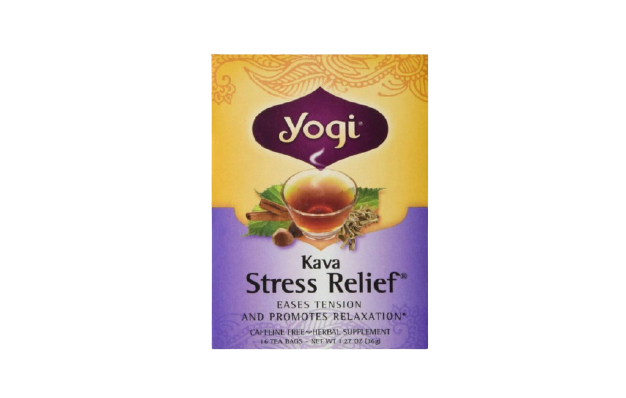
Kava Safety Considerations
Like any supplement, there are some potential side effects of kava. These side-effects are generally very mild and go away as the kava wears off. However, in some cases, kava can become dangerous.
Anybody taking medications for anxiety, depression, Parkinson’s disease, or has underlying liver, kidney, or blood conditions should speak with a doctor before trying kava.
Additionally, kava has not been proven safe during pregnancy or breastfeeding and should be avoided during this time.
The chances of experiencing side effects depend on four factors:
- Type of kava — Tudei kava has a much higher chance of producing negative side-effects than Noble kava.
- Dose of kava — The higher the dose, the more likely you are to experience side effects.
- Other supplements/medications — Some medications can have a negative interaction with kava. Speak with a doctor before using kava if taking medications — especially for anxiety or depression.
- Underlying health conditions — Some health conditions can make it more likely for kava to produce side effects as well, especially liver or kidney conditions. Always speak with your doctor before using kava if you have any underlying health conditions.
The side-effects of kava can be grouped into two categories depending on how often kava is used.
1. Acute Kava Use — Side-Effects
These are the side-effects experienced after single doses of kava, which will go away as soon as the kava wears off. They’re the side-effects produced by the kavalactones themselves as they circulate around the bloodstream.
Side-Effects of Acute Kava Use May Include:
- Allergic skin reactions
- Dilated pupils
- Enlarged liver
- Fatigue
- Headaches
- Indigestion
- Lightheadedness
- Visual disturbances
- Nausea
2. Chronic Kava Use — Side-Effects
People that use kava regularly, in high doses, over long periods of time can start to develop other adverse effects. These effects rely on changes in homeostatic mechanisms in the body caused by the herb. You can avoid this by taking kava in moderation and in smaller doses.
If kava use is stopped, these side-effects will typically disappear.
Side-Effects of Chronic Kava Use May Include:
- Facial puffiness
- Increased red blood cell count
- Kava dermopathy (scaly skin)
- Lowered body weight
- Lowered serum protein (less protein in the blood)
- Lymphocytopenia (low lymphocyte levels)
- Movement disorders
- Pulmonary hypertension
- Rashes
- Thrombocytopenia (lower blood plasma levels)
Can Kava Really Cause Liver Damage?
There’s an unfortunate rumor going around about kava that we’d like to clear up once and for all — that kava causes liver damage.
The rumor started about 15 years ago in Switzerland. Some researchers reported that kava extracts were causing liver damage in their patients. This eventually lead Swiss and German governments to ban the herb.
These reports have since been disproven after it was found that the patients experiencing liver damage were also taking known liver-toxic medications at the same time. It was ruled that kava wasn’t the cause of the liver damage, but it certainly didn’t protect these patients from liver damage either.
There has also been a lot of study proving the safety level of kava in hundreds, even thousands of different patients.
Ultimately, the bottom line here is that kava is very unlikely to cause liver damage unless you’re taking medications that have known liver toxicity at the same time — so always speak with your doctor before using kava is you’re taking any medications.
Is Kava Legal?
After Switzerland and Germany banned the plant following the reports of liver damage noted above, it began a chain reaction around the globe. Countries like the United Kingdom, France, Canada, Australia, and New Zealand also banned the sale of the herb.
After a lot of dispute in the scientific community about earlier claims of liver damage induced by kava, most of these countries have since updated their kava laws to allow the herb once again. Some countries, such as Canada and Australia, met somewhere in the middle — allowing the possession of kava, but keeping tight regulation on the sale of the herb.
Some countries (like South Africa) have yet to update these laws in light of the new findings.
Here’s a quick breakdown on the current laws regulating kava around the world:
| Country | Legal Status |
| Australia | Regulated (Health Practitioners Only) |
| Brazil | Grey Area |
| Canada | Legal |
| France | Regulated |
| Germany | Legal |
| Mexico | Legal |
| Netherlands | Restricted |
| New Zealand | Legal |
| Norway | Grey Area (Not Controlled, but also listed as a prescription medicine) |
| Poland | Banned (Prison Sentence) |
| Sweden | Grey Area (Not available for sale, but can be imported) |
| Switzerland | Restricted |
| United Kingdom | Restricted |
| United States | Legal |
Learn More About Kava
Kava is a complicated plant, and there’s a lot to talk about regarding its use. This article only broke the surface of this interesting supplement, but we have a lot more information available on the many facets of using this powerful herb.
If you’re interested in the physiology and medicinal uses of kava, check out our health guides on kava where we break down the effects of kava and discuss what the current research says about the use of kava for our health.
If you’re ready to buy some kava for yourself, check out our product review guides to decide which kava products are most likely to fit the effects you’re looking for.
We highly recommend reading reviews before you spend your money to make sure you don’t waste your hard-earned cash on low-quality products or order kava with the wrong effect profile for what you’re looking for.
We also have detailed information on how to prepare kava, how to calculate the right dose, safety information, and how kava compares to similar herbs, including kratom, damiana, or CBD.
